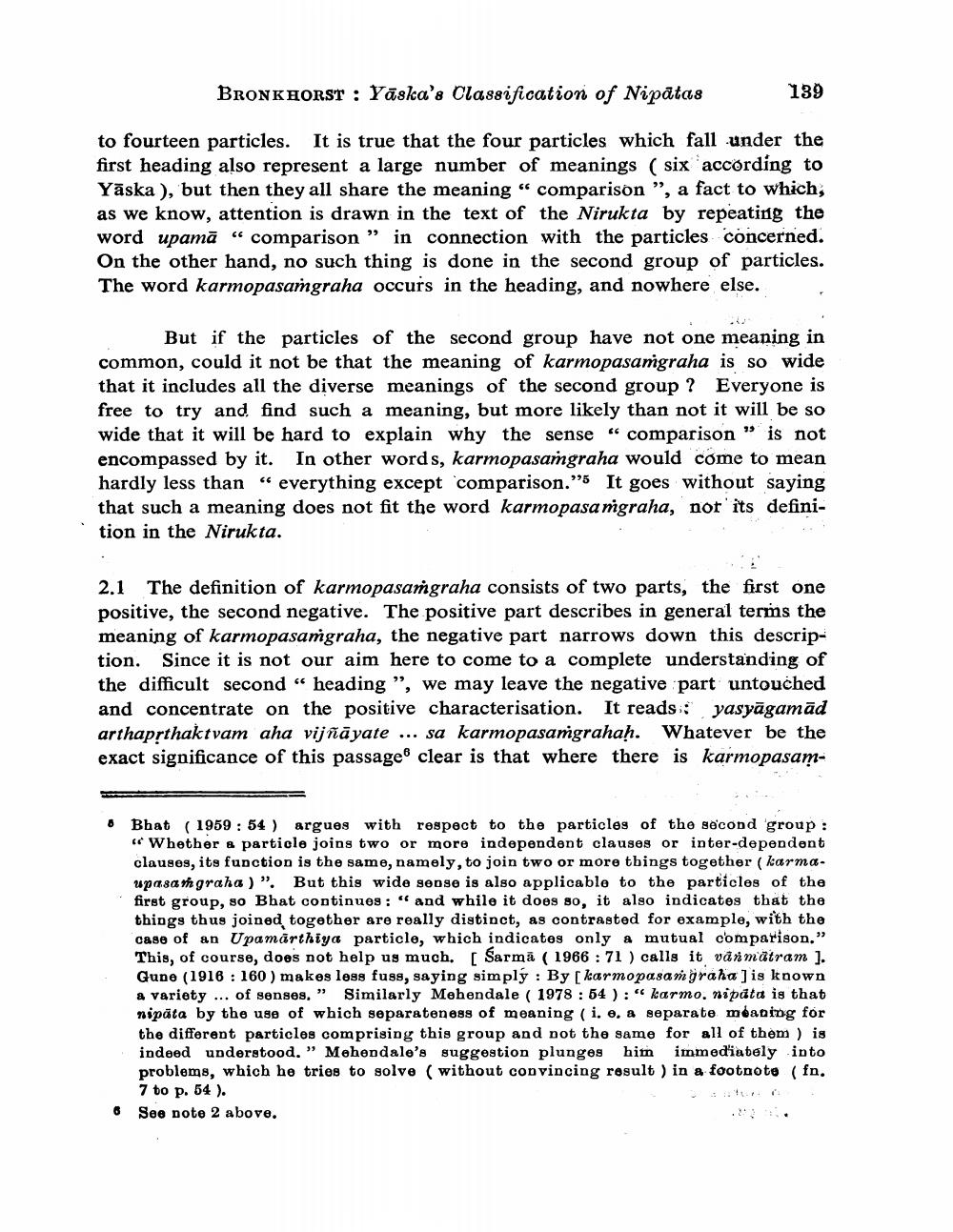________________
BRONKHORST : Yāska's Classification of Nipatas
139
to fourteen particles. It is true that the four particles which fall under the first heading also represent a large number of meanings (six according to Yāska ), but then they all share the meaning “ comparison ", a fact to which, as we know, attention is drawn in the text of the Nirukta by repeating the word upamā “ comparison ” in connection with the particles concerned. On the other hand, no such thing is done in the second group of particles. The word karmopasangraha occurs in the heading, and nowhere else.
But if the particles of the second group have not one meaning in common, could it not be that the meaning of karmopasamgraha is so wide that it includes all the diverse meanings of the second group ? Everyone is free to try and find such a meaning, but more likely than not it will be so wide that it will be hard to explain why the sense “ comparison" is not encompassed by it. In other words, karmopasagraha would come to mean hardly less than “everything except comparison." It goes without saying that such a meaning does not fit the word karmopasa mgraha, nor its definition in the Nirukta.
2.1 The definition of karmopasaṁgraha consists of two parts, the first one positive, the second negative. The positive part describes in general terms the meaning of karmopasamgraha, the negative part narrows down this description. Since it is not our aim here to come to a complete understanding of the difficult second “ heading", we may leave the negative part untouched and concentrate on the positive characterisation. It reads: yasyāgamād arthaprthaktvam aha vijñāyate ... sa karmopasamgrahaḥ. Whatever be the exact significance of this passage clear is that where there is karmopasam
Bhat ( 1959 : 54 ) argues with respect to the particles of the second group: « Whether & particle joins two or more independent clauses or inter-dependent clauses, its function is the same, namely, to join two or more things together (karma. upasangraha)". But this wide sepse is also applicable to the particles of the first group, so Bhat continues: “and while it does so, it also indicates that the things thus joined together are really distinct, as contrasted for example, with the case of an Upamärthiya particle, which indicates only a mutual comparison." This, of course, does not help us much, [Sarma ( 1966 : 71 ) calls it vanmatram ]. Gune (1916 : 160 ) makes less fuss, saying simply : By [karmopasangraha ) is known a variety ... of senses, " Similarly Mehendale ( 1978 : 54 ) :“ karmo, nipata is that nipāta by the use of which separateness of meaning (i. e, a separate meaning for the different particles comprising this group and not the same for all of them ) is indeed understood." Mehendale's suggestion plunges him immediately into problems, which he tries to solve (without convincing result ) in a footnote (fn.
7 to p. 54 ). 6 See note 2 above.




